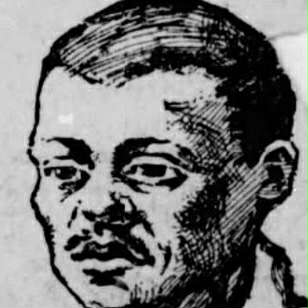
d: 1915
John Wesley Robinson
Summary
Name:
Years Active:
1896 - 1913Status:
ExecutedClass:
Serial KillerVictims:
3Method:
Strangulation / Bludgeoning / DismembermentDeath:
February 15, 1915Nationality:
USA
d: 1915
John Wesley Robinson
Summary: Serial Killer
Name:
John Wesley RobinsonStatus:
ExecutedVictims:
3Method:
Strangulation / Bludgeoning / DismembermentNationality:
USADeath:
February 15, 1915Years Active:
1896 - 1913bio
John Wesley Robinson was born in 1867, reportedly in Nashville, Tennessee, although details about his early life remain scarce. His upbringing, family dynamics, and education are not well documented, which was common for working-class African American men in post-Civil War America. What is known is that by the mid-1890s, Robinson was living in St. Louis, Missouri, and was involved in a tumultuous romantic relationship with a woman named Ella Jones.
There is no record of consistent employment or any formal schooling, and his life before the murders appears to have been marked by emotional volatility and a tendency to lash out under pressure. He reportedly surrounded himself with questionable acquaintances, one of whom—James "Temp" Temples—would later become briefly linked to his crimes.
After serving 11 years in prison for his first known murder, Robinson re-entered society on parole in 1908. He relocated to Kansas City, Missouri, where he married a woman named Mary Felton. Together, they lived with Mary’s young daughter, Alma.
murder story
On June 16, 1896, Robinson was awakened early in the morning by his girlfriend Ella Jones, who came to his home asking for medicine. An argument erupted after she accused him of cheating. In a rage, Robinson retaliated by accusing her of planning to poison him. The fight escalated to physical violence, he strangled Ella to death in a fit of anger.
After the murder, Robinson bizarrely went back to bed, lying next to her corpse. A breeze startled him awake, making him fear she might still be alive. To ensure her death, he shoved a wet sponge down her throat. The next day, he dug a shallow grave beneath his kitchen floor and buried her there. Paranoia set in, and he quickly abandoned St. Louis. Ella’s body was discovered days later, and a city-wide manhunt ensued.
Robinson was captured while fleeing aboard a steamboat. As he was escorted through St. Louis, mobs formed to lynch him, requiring armed guards for his protection. During questioning, he calmly confessed. Though law enforcement believed his crime deserved the death penalty, Robinson secured a plea deal and was sentenced to 15 years for second-degree murder.
Paroled in January 1908, Robinson seemed to rebuild his life, but darkness soon returned. He married Mary Felton and moved into her home at 2213 Michigan Avenue with her daughter, Alma. Their marriage was marked by frequent accusations of infidelity, with Mary threatening to have him sent back to prison.
On April 11, 1913, Robinson decided to kill them both. That night, he strangled Mary in her sleep, then dismembered her body. He proceeded to Alma’s room, strangled the 11-year-old girl, and dismembered her as well. He burned their limbs in the stove, buried Mary in the backyard, and stuffed Alma’s remains in a bag, which he buried near a nearby pond.
Their disappearance went unnoticed for nearly a month until a neighbor accidentally discovered Mary’s remains. Robinson was arrested on May 21, 1913, and quickly confessed, but attempted to implicate Jennie Hill, Mary’s half-sister, claiming she helped and had personal motives. His claim later fell apart in court, and Hill was eventually exonerated.
During the investigation, a woman named Fannie Taylor accused Robinson of being responsible for a similar murder in Tennessee, but no evidence linked him to the case. During trial, Robinson continued to claim Jennie Hill killed Alma. Due to the shocking brutality of the murders, the judge ordered the courtroom cleared for much of the trial to avoid public uproar. Though Robinson tried to plead guilty, the judge rejected his request and allowed the jury to determine the verdict.
Ultimately, he was convicted and sentenced to death. Hill was cleared of all charges after Robinson admitted he had fabricated her involvement.
While awaiting execution, Robinson underwent a psychological assessment, where it was determined he had the mental capacity of an 11-year-old child. Despite this, Missouri Governor Elliot Woolfolk Major refused to grant clemency.
Robinson was executed by hanging on February 15, 1915, in Kansas City. In his final hours, he appeared calm, cracking jokes with prison guards and his cellmate. His last meal was simple: two cups of coffee and an orange. Standing at the gallows, he smiled and said, “I am happy; I am ready to go.” Moments later, the trapdoor dropped. Pastor W.C. Williams, who had counseled Robinson, delivered a sermon after the execution.